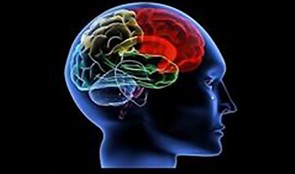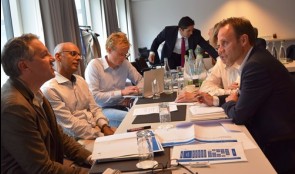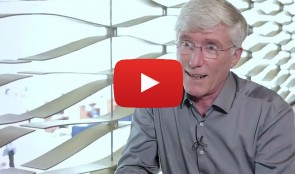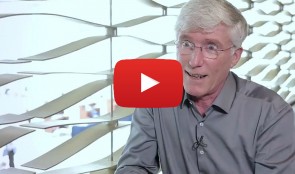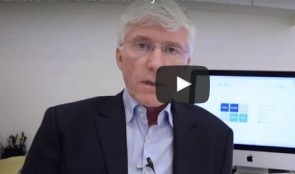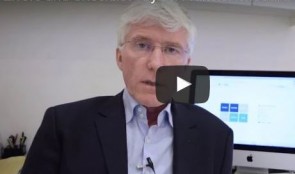Internationally renowned experts with great experience and interdisciplinary expertise in simulation gathered in Zurich for the 1-day Expert Meeting to discuss the topic and share their expertise in this field with theFoundation Boardand representatives of theExpert Councilof the Osteology Foundation attending the meeting.
The Osteology Foundation organizes an Expert Meeting every year to discuss a topic either of high relevance for science and practice in oral regeneration or of importance for the future development of the Foundation and its activities or the dental field in general, as was the case at the 2015 meeting.
The aim of the Expert Meeting on simulation in training and education was to evaluate the state of the art in other disciplines, to find out which new possibilities current developments and technologies allow, and the consequences for the Osteology Foundation on the one hand, but also for the whole field of professional training and education in dentistry, on the other.
External speakers and experts invited to the 2015 meeting wereProfessor Amitai Ziv, Israel,Professor Margaret Cox, UK,Professor Gabor Szekely, Switzerland,Dr David Joseph, France, andArnaud Cosson, France. In addition,Dr Stefan Tuchschmid, Switzerland, joined for the discussions.Dr Franck Renouard, France, Board Member of the Osteology Foundation, gave an introduction to the subject area, emphasising the overall importance of training. To err is human
Professor Amitai Ziv, Founder and Director of theIsrael Centre of Medical Simulation(MSR), and also a veteran combat pilot and trainer from the Israeli Air Force gave a truly eye-opening talk, demonstrating different applications of simulation in training and the impact they can have in the practice. As a medical professional, he demonstrated the crucial importance of medical simulation, but also being a pilot, he placed a special focus on lessons learned from the aviation field.
In late 1999, the important report on patient safety To Err is Human was issued by the US National Institute of Medicine, Ziv told the audience. It indicated that health care is far less safe than it should be, and that deaths due to medical errors in the US number almost 100,000 annually.
The report triggered a massive response, and simulation in health care has grown rapidly ever since. Today simulation is used to reproduce real patient experiences and encounters using guided and controlled simulation-based scenarios, Ziv continued. It offers a safe and mistake-forgiving environment where trainees can learn from their errors without risking harm to real patients. Simulation provides a hands-on empirical educational modality, enabling controlled proactive exposure of trainees to both regular and complex, uncommon clinical scenarios. It also provides an opportunity for team training, which is important for patient safety, but is seldom addressed in traditional medical education.
Another important benefit is the reproducible, standardized, objective setting it provides for assessment purposes, Ziv added.
He demonstrated the impact of the training by showing examples from his institute, the MSR, which operates as a national simulation centre conducting mandatory training and assessment programs in multiple clinical fields. At MSR they use actors, models and virtual techniques to simulate a huge variety of training situations. Rapid increase in computational power
Professor Gabor Szekelyin his presentation provided an introduction into the technical aspects of simulation for medical training, what is possible now, and what may be possible in the future. Szekely is head of theMedical Image Analysis and Visualization Groupat the Swiss Federal Institute (ETH) in Zurich and is also Chairman of the Swiss Institute of Computer Aided Surgery.
The rapid increase in computational power available, as well as current capabilities in computer graphics and virtual reality, enable the use of advanced, complex simulation systems, Szekely explained. As a result, simulation is set to become a useful tool in everyday clinical practice, efficiently assisting surgeons in dealing with difficulties in the operating room.
Szekely presented examples for the development of surgical simulators, and the major of technological components necessary for their development. Medical simulation mainly concentrates on minimally invasive procedures, he explained, because there are still many obstacles towards creating realistic haptic training simulators for open surgery. Implementation in the dental field
Professor Margaret Cox, Professor of Information Technology in Education at Kings College London, who has developed educational software for more than 40 years, presented a haptic device that she and her working group have developed for dental education.
The aim of thehapTEL projectis to develop and evaluate a haptic environment for preparing cavities in a virtual tooth. The outcome of the project included setting up 14 fully functional hapTel curriculum workstations, which have been integrated into the dental undergraduate curriculum for six years, explained Cox. Educational evaluation results showed that the students who learn on the hapTEL workstations performed just as well as those learning in the traditional Phantom Head laboratory, with the added advantage of being able to review their progress at any time and seeing exactly how well they are doing.
Cox also reported that since July 2011 the work of the project has been extended and modified hapTEL work-stations now enable students to learn how to give injections. Simulation of implant placement
Another example where simulation is used, was presented byDr David Josephfrom the University of Nancy. He presented initial results obtained with a haptic simulator (VirTeaSy) that has been used to train and evaluate students in implantology. They observed improved performance in students who trained on the simulator with results close to those of experienced operators (Joseph et al. Biomed Res Int 2014).
Implant placement simulators are now commercially available, said Arnaud Cosson, CEO ofHRV, the French company producing and marketing the simulators in combination with a 3D realistic immersive environment and the corresponding software that offers about 70 exercises in which realistic clinical situations are simulated. Experience with surgical simulators
The participants of the meeting had the opportunity to try out an arthroscopy simulator used in orthopaedics. The highly realistic haptic simulator presented by the Zurich-based companyVirtaMed demonstrated the technical possibilities in the field of simulation. Drawbacks in current education
During workshops in the afternoon, the Osteology Foundation Board and members of the Osteology Expert Council took the chance to discuss the topic in small groups with the invited experts. The discussions revealed drawbacks and deficiencies in current training at universities, but also in continuing education for practitioners in the dental field. Both recognition of the importance of simulation in dentistry, as well as the current technologies is still not common, the experts agreed.
In discussions, the participants of the Osteology Expert Meeting came to the conclusion that various types of mistakes can be avoided through more extensive or better training. Three type of mistakes were identified: mistakes caused by lack of knowledge, mistakes arising from lack of experience, and mistakes relating to attitude.
As general problems that exist in training students, the following points were listed: the availability and heterogeneity of cases, limited personal resources, and the impossibility of re-doing procedures from scratch in case of mistakes. In addition, the training of soft skills and reflection on mistakes is lacking in student education, and interdisciplinary education is often completely neglected.
The participants of the Osteology Expert Meeting in Zurich agreed that there is a great need for simulation in dental education in two different areas of expertise: Firstly, for the training of processes, simulating stress, and using soft skills in different clinical situations. And secondly, realistic haptic training of different procedures and practical skills, where simulation is to be used in combination with existing and well-established techniques. Consequences for training in dentistry?
After the presentations and discussions with the experts, the Osteology Board and Expert Council arrived at the conclusion that simulation in training is certainly something that should not be neglected. Deficiencies in current training and education in dentistry exist and current methodology can be improved. How these deficiencies can be eliminated and the role the Osteology Foundation could play, remains open and has to be discussed further.
The Osteology Foundation thanks all experts, speakers and contributors to the Expert Meeting for sharing their knowledge and opening up new perspectives for training and education in dentistry.
